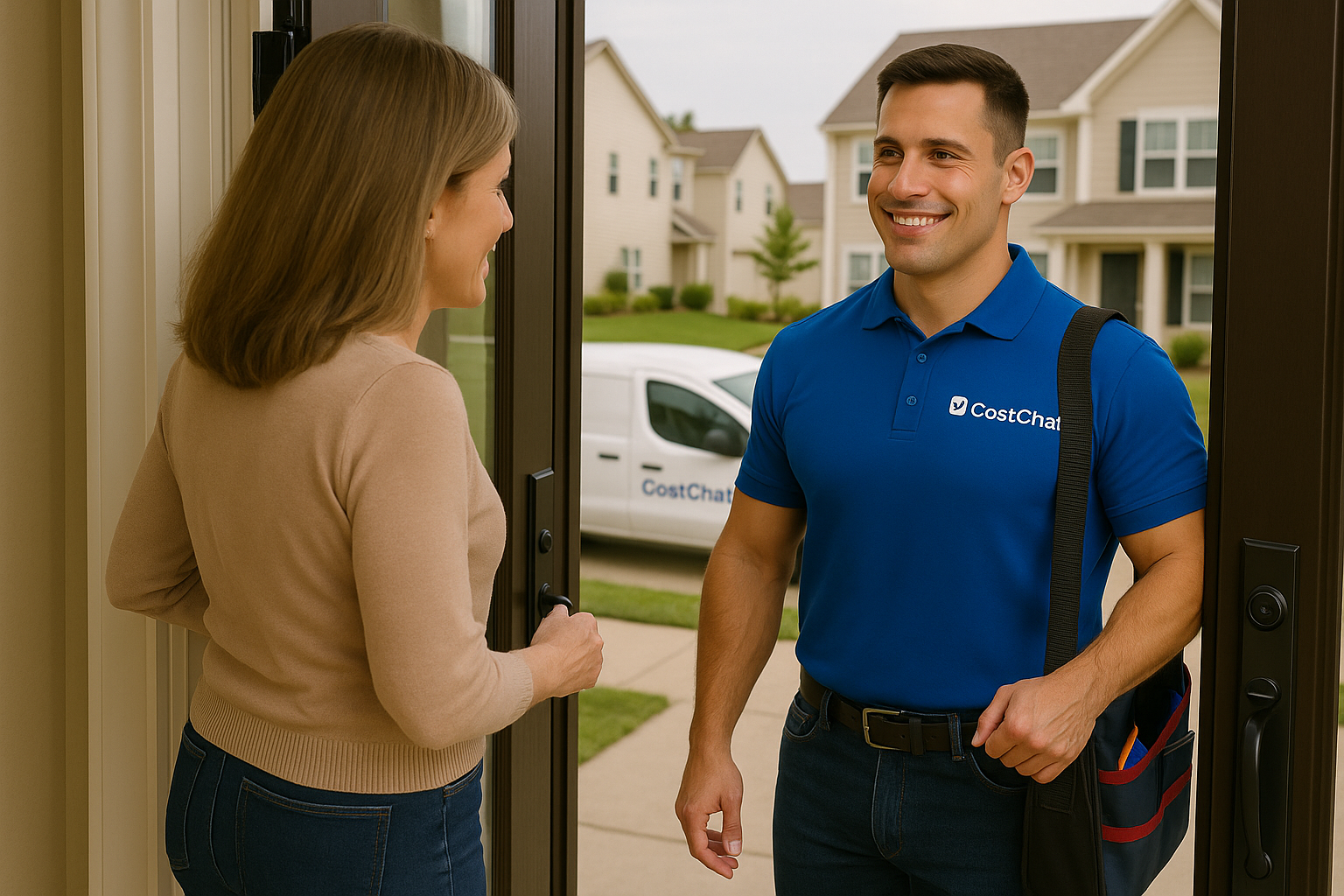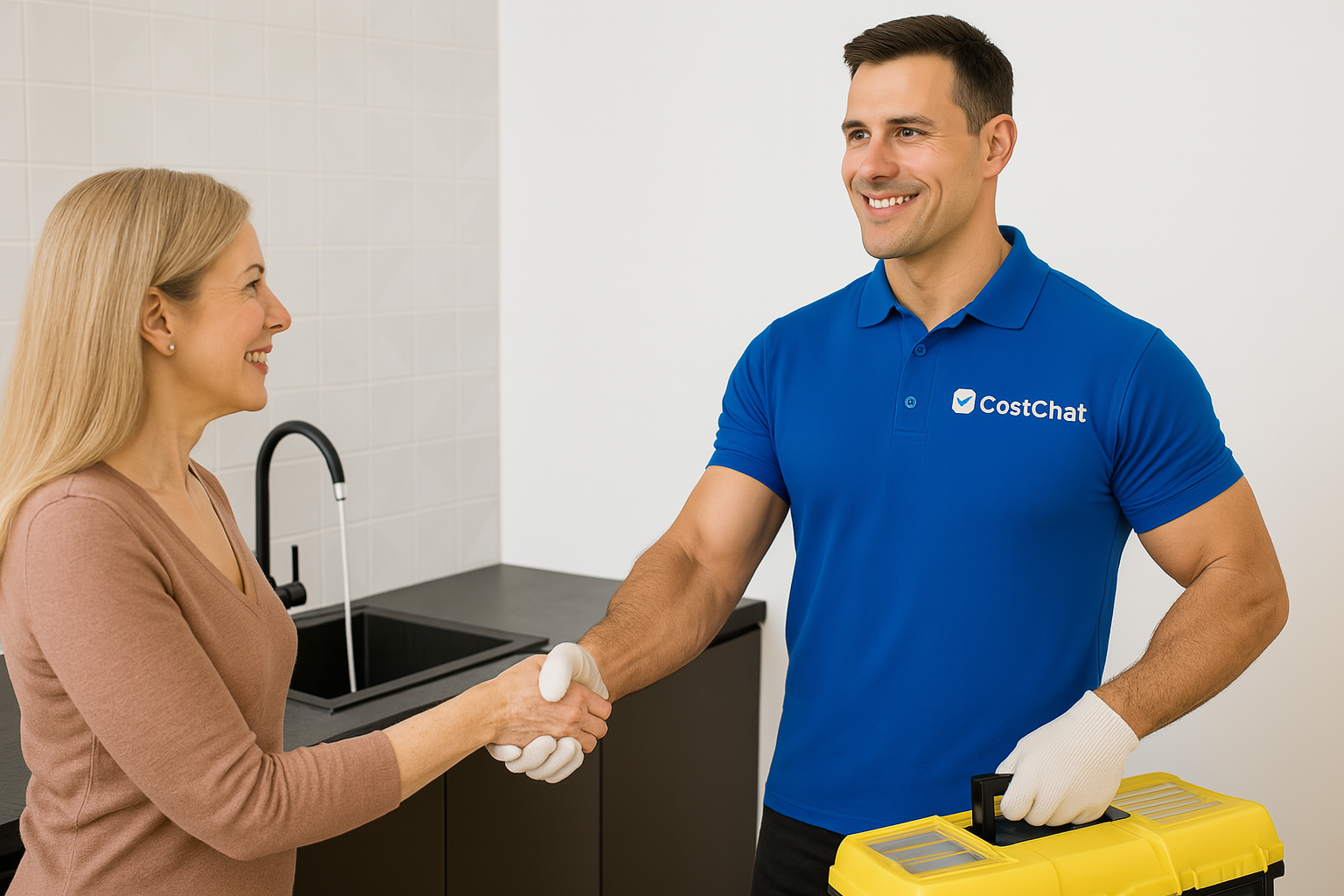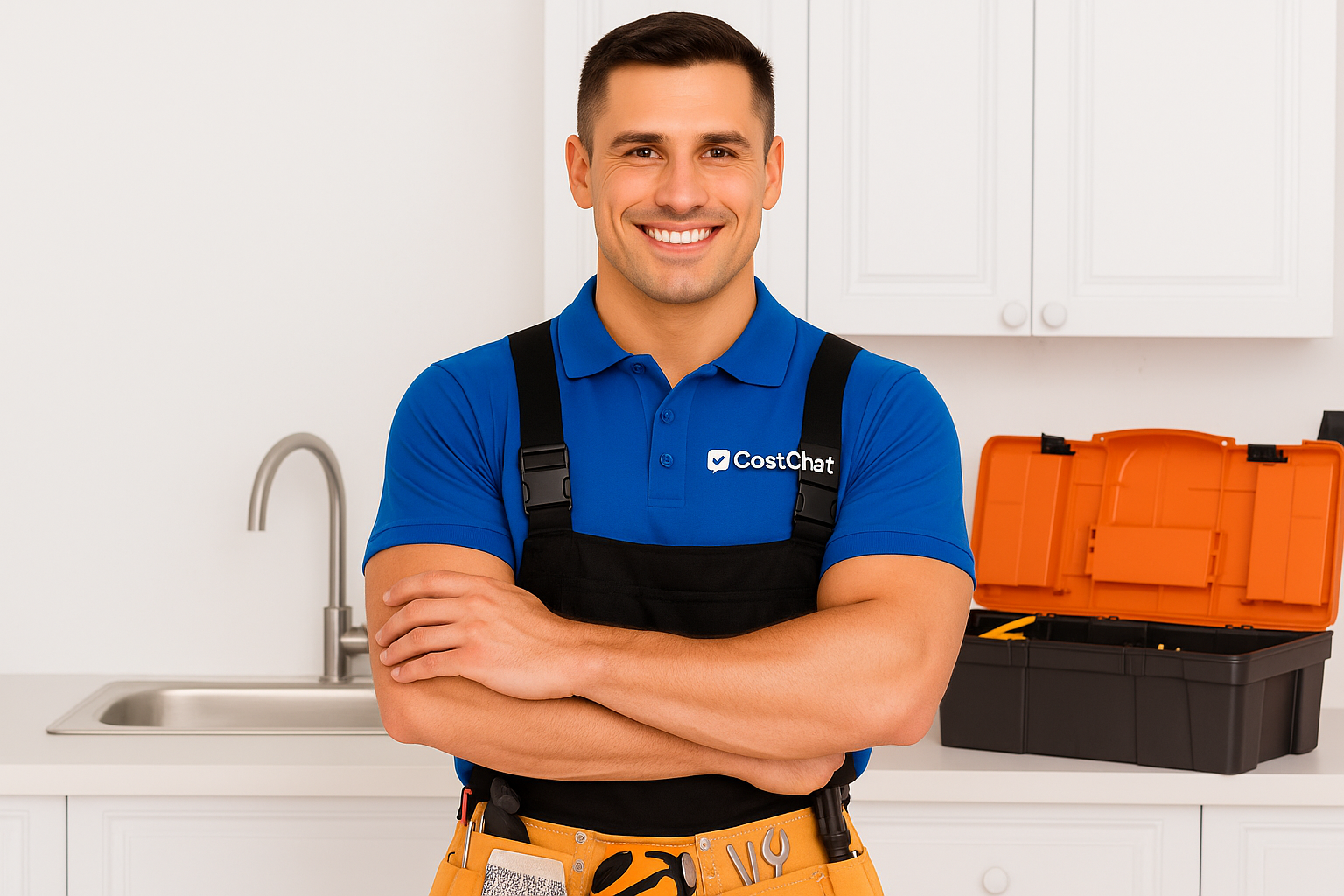
Fast, Reliable Slab Leak Repair Pros in Miami, FL
How to Hire Top Rated Slab Leak Repair Pros in Miami, FL
Get a Free Online Estimate
Share your project details and receive a free online estimate from top-rated local pros. Not sure what it should cost? Check our Cost Guide.
Get EstimateCompare Local Quotes
View multiple free online quotes side by side. Use our Price Guide to understand labor rates, materials, and service fees before you hire.
Compare NowBook Best Top Rated Pros
Choose a licensed pro with confidence. Lock in your date after reviewing your free estimate and browsing our expert Cost Guide for peace of mind.
Book NowDid You Know?
74% ⚠️
of homeowners face surprise costs and delays — mostly from hiring unvetted pros. Don’t risk it. Hire trusted experts today.
Hire Top Rated & Verified ProsWork With Verified & Trusted Pros 🛡️
Save time, avoid costly mistakes, and experience reliable, top-quality service for every home project. Book now for priority scheduling and peace of mind.
Hire a Top Rated ProGet Instant Online Estimate of Slab Leak Repair in
🔎 CostChat Online Cost Estimator
Describe your project and location to get an instant estimate.
Expert Slab Leak Repair Services in Miami, FL: Your Comprehensive Homeowner's Guide
Living in Miami, FL, means enjoying the sunshine and vibrant culture, but it also comes with unique home maintenance challenges. For many Miami homeowners, the stability and integrity of their homes are paramount, and a hidden slab leak can be a homeowner's worst nightmare, causing extensive damage if left unaddressed. We understand the concerns that arise when you suspect a problem beneath your foundation. This guide is designed to equip you with the knowledge needed to identify, understand, and resolve slab leaks, ensuring your Miami home remains a safe and comfortable sanctuary.
Table of Contents
- Miami, FL's Unique Slab Leak Repair Landscape: Why Local Expertise Matters
- Neighborhood Hotspots: Micro-Local Slab Leak Repair Risks & Solutions
- Common Problems & Triggers for a Professional Slab Leak Repair Call
- Navigating Miami, FL's Regulations: Permits, Code & Professional Licensing
- Maximize Your Savings: Miami, FL Slab Leak Repair Rebates & Incentives
- Choosing Your Miami, FL Slab Leak Repair: Factors to Consider
- Understanding the Cost of Slab Leak Repair in Miami, FL
- Hiring Miami, FL's Top-Rated Slab Leak Repair Professional: Your Action Plan
- FAQs About Slab Leak Repair in Miami, FL
Miami, FL's Unique Slab Leak Repair Landscape: Why Local Expertise Matters
Miami, FL Homes: A Slab Leak Repair-Related Time Capsule
Miami is home to approximately 464,655 residents, with a diverse housing stock that spans decades. Many homes, particularly in historic neighborhoods, were constructed between the 1920s and 1970s. This older infrastructure, while charming, often presents unique challenges for slab leak repair. Galvanized steel pipes, common in homes from this era, are prone to corrosion. Similarly, cast iron drain systems can deteriorate over time, leading to clogs and potential leaks. The sandy and limestone-based soil prevalent in Miami, coupled with high humidity and occasional ground movement from heavy rains, can put significant stress on these aging systems, increasing the likelihood of slab leaks.
Architectural styles vary widely, from Mediterranean Revival in Coral Gables and Coconut Grove to the iconic Art Deco structures of South Beach. Each era and style can have specific plumbing considerations that impact slab leak repair. Newer constructions, while generally more robust, still face the same environmental pressures that affect older homes.
Miami, FL's Environmental & Utility Factors & Climate Impact on Slab Leak Repair
Miami’s subtropical climate, characterized by hot, humid summers and mild winters, plays a significant role in plumbing longevity. While the absence of harsh freeze-thaw cycles reduces the risk of frozen pipes, the region’s heavy seasonal rainfall and susceptibility to hurricanes increase the risk of flooding. This can damage plumbing systems and contribute to soil shifts, exacerbating slab leak issues. The city’s soil composition, primarily sandy with limestone deposits, is susceptible to moisture changes. Periods of drought can cause localized water pressure fluctuations, while extended wet periods or flooding can lead to soil expansion and contraction, potentially stressing underground pipes.
Your water supply in Miami is managed by the Miami-Dade Water and Sewer Department (WASD), drawing primarily from the Biscayne Aquifer. While the water is generally soft, trace minerals can contribute to minor scale buildup over time. Although WASD complies with federal standards, understanding these local water characteristics is crucial for assessing potential long-term effects on your plumbing system and its susceptibility to leaks.
 Request a Quote
Request a Quote
Neighborhood Hotspots: Micro-Local Slab Leak Repair Risks & Solutions
Miami's diverse neighborhoods each have their own character and potential plumbing vulnerabilities. Understanding these localized risks can help in proactive maintenance and quicker detection of issues like slab leaks.
- Coral Gables: Known for its older, established homes with Mediterranean Revival architecture, Coral Gables properties may have original plumbing infrastructure that is more susceptible to corrosion and wear. Special attention should be paid to the specific age of the home's plumbing system.
- Coconut Grove: With its lush landscape and a mix of historic and renovated properties, Coconut Grove homes can face challenges related to tree roots encroaching on underground pipes, in addition to the general risks associated with older plumbing.
- South Beach: Famous for its Art Deco heritage, homes in South Beach, especially those near the coast, might contend with the effects of saltwater intrusion or higher humidity levels, which can accelerate corrosion in plumbing components.
- Downtown Miami & Brickell: Many newer high-rise buildings in these areas have different plumbing configurations, but older commercial buildings or adjacent residential areas can still experience slab leak issues similar to other parts of the city.
Common Problems & Triggers for a Professional Slab Leak Repair Call
Recognizing the signs of a slab leak early is critical to minimizing damage and cost. In Miami, several indicators might point to a problem beneath your foundation.
- Unexplained Water Bill Increases: A sudden spike in your water bill, without a change in usage, is a classic sign of a leak.
- Sound of Running Water: Hearing the sound of water running when all fixtures are off can indicate a leak within the walls or under the slab.
- Warm Spots on the Floor: If your home has hot water lines under the slab, a leak in one of these lines can cause noticeable warm spots on your flooring.
- Cracks in Walls or Floors: Persistent moisture and water pressure from a leak can cause foundation settling or expansion, leading to visible cracks.
- Musty Odors or Mold/Mildew: Hidden moisture from a slab leak can promote mold and mildew growth, leading to a persistent musty smell, especially in lower levels or crawl spaces.
- Damp or Wet Spots on Flooring/Carpet: Visible moisture appearing on your floors, even in areas far from fixtures, is a strong indicator of a leak.
Many of Miami's homes, especially those built before the 1970s, may have plumbing systems with lifespans that are nearing or have exceeded their typical longevity. For example, galvanized steel pipes commonly installed in homes built between the 1920s and 1960s typically have a lifespan of 40-60 years, making them prime candidates for leaks. Addressing these issues promptly is key. If you suspect a leak and need immediate guidance on what to do, consult our resource on What to Do in a Plumbing Emergency.
To help you identify potential issues before they become major problems, familiarize yourself with the common warning signs. Understanding these can save you significant time and money. Learn more by reading our guide on Warning Signs of Plumbing Problems.
 Request a Quote
Request a Quote
Navigating Miami, FL's Regulations: Permits, Code & Professional Licensing
Ensuring your slab leak repair is handled correctly involves understanding local regulations. The City of Miami's Department of Building and Zoning oversees permitting for plumbing work. Projects that involve significant pipe repair or repiping typically require a permit to ensure compliance with safety and building codes.
Governing Code: Miami adheres to the Florida Building Code (FBC), which incorporates the 2017 Uniform Plumbing Code (UPC) with specific amendments for local conditions. These amendments address unique regional risks such as flood zones and hurricane resilience, ensuring that repairs meet the highest standards for safety and durability in South Florida's environment.
Required Inspections: Depending on the scope of the repair, inspections may be required at various stages of the project, such as after the piping is exposed and before it's covered, and upon completion. Your licensed plumber will be familiar with the specific inspection requirements.
DIY vs. Professional: While some minor plumbing tasks might be suitable for DIY, slab leak repair is a complex job that is best left to professionals. Improper repairs can lead to further damage and void warranties. For guidance on when DIY might be appropriate for home repairs, see our guide on When to Consider DIY.
Professional Licensing: In Florida, plumbers are licensed by the Florida Department of Business and Professional Regulation (DBPR). It is crucial to hire a licensed professional. You can verify a plumber's license status and ensure they are in good standing by using the Florida DBPR License Verification tool. Always ask for proof of insurance as well.
Maximize Your Savings: Miami, FL Slab Leak Repair Rebates & Incentives
Homeowners in Miami have opportunities to save on plumbing upgrades and water conservation efforts. While specific rebate programs for slab leak repair itself might be limited, incentives often exist for related upgrades that can improve overall water efficiency and reduce future risks.
- Water Conservation Programs: Miami-Dade County, through programs like Water Smart Miami, often offers incentives for water-efficient fixtures, such as low-flow toilets or showerheads. While not directly for leak repair, these can contribute to overall water bill savings. You can find more information on the Water Smart Miami website.
- Utility Company Incentives: Keep an eye on programs offered by the Miami-Dade Water and Sewer Department (WASD) or your energy provider, as they sometimes offer rebates for high-efficiency water heaters or other water-saving technologies.
Bonus Tip: Strategic timing can be key. Sometimes, rebates are tied to specific times of the year or coincide with larger home improvement projects. Combining smaller upgrades with a major plumbing job can maximize savings.
To discover more ways to reduce your home improvement costs, explore our Saving Tips guide.
 Request a Quote
Request a Quote
Choosing Your Miami, FL Slab Leak Repair: Factors to Consider
When addressing a slab leak, the chosen method of repair and the components used are critical for long-term success, especially in Miami's unique environment. The Miami-Dade Water and Sewer Department draws from the Biscayne Aquifer, and while the water is generally soft, mineral content and the sandy-limestone soil can influence pipe longevity.
Slab Leak Repair Options:
- Spot Repair: For minor leaks, isolating and repairing the damaged section of pipe is often the most cost-effective solution. This is ideal for pinpointed leaks where the surrounding pipes are still in good condition.
- Pipe Relining: This trenchless method involves inserting an epoxy-saturated liner into the existing pipe, creating a new pipe within the old one. It's a good option for pipes with multiple leaks or significant corrosion.
- Pipe Bursting: Another trenchless method, pipe bursting replaces the old pipe with a new one by fracturing the old pipe from the inside.
- Re-piping: In cases of widespread pipe degradation, re-piping involves running new pipes around or over the existing slab, bypassing the compromised foundation plumbing entirely. This is a more invasive but comprehensive solution for severely damaged systems.
Sizing and Application for Miami Homes: The appropriate solution often depends on the age of your plumbing system, the type of pipes (e.g., copper, galvanized steel), and the severity of the leak. Older homes in Miami might benefit more from re-piping if multiple leaks are suspected, whereas newer homes may only require spot repairs.
Key Considerations for Miami, FL Homes:
- Soil Conditions: The sandy, limestone-rich soil that can shift with moisture changes necessitates durable repair methods that can withstand ground movement.
- Humidity and Salt Air: Coastal areas may experience increased corrosion due to humidity and salt air, influencing material choices for any exposed components or future plumbing.
- Local Building Codes: Ensure all repairs comply with the Florida Building Code and any Miami-specific amendments.
Understanding the Cost of Slab Leak Repair in Miami, FL
The cost of slab leak repair in Miami, FL, can vary significantly based on several factors. Homeowners in Miami have a median household income of approximately $59,390, and median property values around $475,200, so understanding project costs is essential.
- Detection: The initial cost for leak detection using advanced acoustic or thermal imaging equipment typically ranges from $250 to $600.
- Spot Repair: A simple spot repair might cost between $400 and $1,500, depending on accessibility and the complexity of the break.
- Pipe Reline/Bursting: Trenchless repair methods can range from $100 to $250 per linear foot. For a typical home, this could amount to $4,000 to $15,000 or more.
- Re-piping: Complete re-piping is a more extensive job and can cost anywhere from $8,000 to $20,000+, depending on the size of the home and the materials used.
Factors Influencing Costs in Miami:
- Pipe Material: Older homes may have galvanized steel or outdated plastic pipes that are more difficult to work with, potentially increasing labor costs.
- Accessibility: The location of the leak under the slab and the ease of accessing it for repair plays a significant role.
- Labor Rates: Professional plumbers in Miami typically charge hourly rates ranging from $75 to $200, with potential for higher rates for emergency services.
- Neighborhood: While not always a direct factor, the type of housing stock prevalent in certain Miami neighborhoods might correlate with the complexity and cost of repairs.
- Flooring Restoration: Costs do not typically include the repair or replacement of flooring, which would be an additional expense.
It is important to remember that these are estimates. Obtaining multiple detailed quotes from licensed and insured professionals is highly recommended to get an accurate understanding of your specific repair costs.
 Request a Quote
Request a Quote
Hiring Miami, FL's Top-Rated Slab Leak Repair Professional: Your Action Plan
Choosing the right professional is crucial for an effective and lasting slab leak repair. Here's how to ensure you hire the best for your Miami home.
- Verify Licensing and Insurance: Always confirm that your chosen professional is licensed by the Florida DBPR and carries adequate liability insurance. This protects you from potential damages and ensures they meet state standards.
- Ask Hyper-Local Questions:
- "Given Miami's soil composition and humidity, what is your recommended long-term solution for slab leaks?"
- "How familiar are you with the plumbing infrastructure common in [mention your neighborhood, e.g., Coral Gables] homes of my home's age?"
- "What methods do you use for non-invasive leak detection?"
- "Are your repairs compliant with the specific amendments to the Florida Building Code for our region?"
- Check Local Reviews: Look for reviews specifically from other Miami homeowners. Websites like Google Reviews, Yelp, and Angie's List can provide valuable insights into a contractor's reliability and quality of work.
- Get Multiple Detailed Quotes: Obtain at least three itemized quotes from different reputable companies. Ensure each quote clearly outlines the scope of work, materials, labor costs, warranty information, and timelines.
- Written Contract: Always insist on a written contract that details all aspects of the job. This should include payment schedules, warranty terms, and a clear description of the work to be performed.
- Avoid Common Mistakes: Be wary of contractors who pressure you into immediate decisions, offer unusually low prices, or are reluctant to provide detailed quotes. For more tips on what to avoid, consult our guide on Mistakes to Avoid When Hiring a Contractor.
FAQs About Slab Leak Repair in Miami, FL
Is slab leak detection covered by homeowner's insurance in Miami, FL?
In Miami, whether slab leak detection and repair are covered by homeowner's insurance often depends on the cause of the leak. If the leak is due to a sudden, accidental event like a pipe burst (not gradual wear and tear), your policy might cover it. However, gradual damage from corrosion or aging pipes is typically excluded. It's best to review your specific policy or contact your insurance provider directly for clarification.
What are the signs of a slab leak in Miami's humid climate?
In Miami's humid climate, besides the usual signs like unexplained water bills or sounds of running water, look for persistent dampness or mold growth on floors or walls, warm spots on the floor (if hot water lines are involved), and unusual musty odors. The high humidity can sometimes mask or exacerbate the effects of a leak, making early detection crucial.
How does Miami's soil affect the likelihood of slab leaks?
Miami's soil, primarily sandy and limestone-based, can shift with changes in moisture content. Heavy seasonal rains or periods of drought can cause the soil to expand or contract, putting stress on underground pipes. This movement, combined with the potential for corrosion in older pipes common in Miami homes, significantly increases the risk of developing slab leaks.
Can a licensed Miami plumber fix a slab leak without major disruption?
Yes, many modern slab leak repair techniques aim to minimize disruption. Licensed professionals often use advanced diagnostic tools for precise location and may employ trenchless repair methods like pipe relining or pipe bursting, which can often be completed with minimal excavation and less impact on your home's flooring and foundation compared to traditional methods.
What's the average lifespan of plumbing pipes in older Miami homes?
Many older homes in Miami, built between the 1920s and 1970s, may have galvanized steel pipes. These typically have a lifespan of 40-60 years before corrosion and mineral buildup become significant issues, increasing the risk of leaks. Copper pipes, common in homes from the 1970s onward, generally last longer, around 50-70 years, but can still be susceptible to issues in aggressive soil or water conditions.
